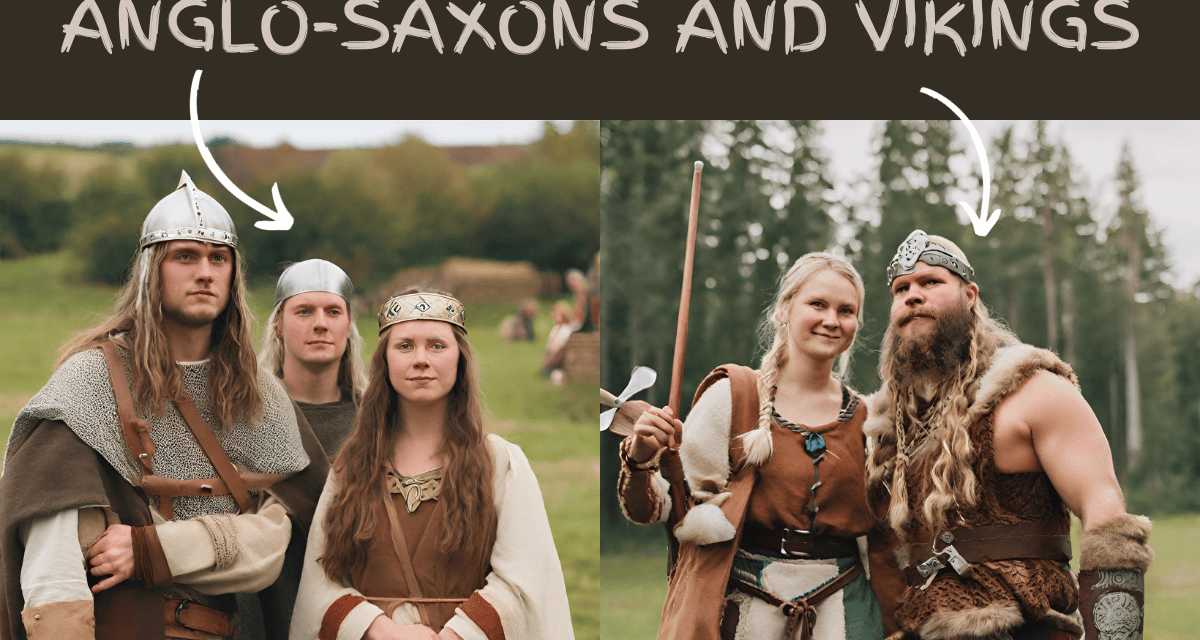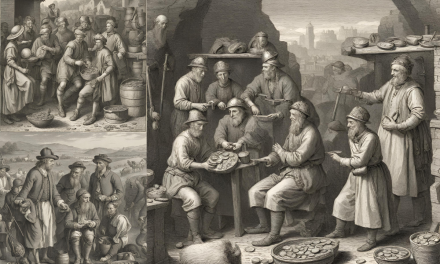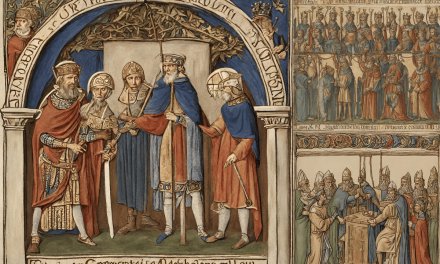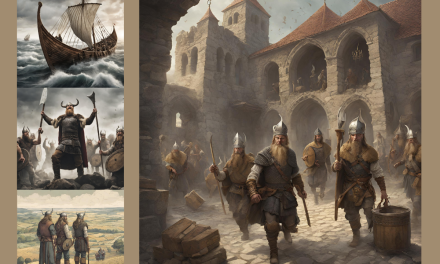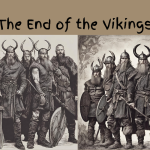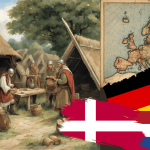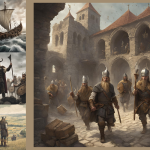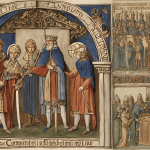Anglo-Saxons and Vikings are two completely different groups of people. Anglo-Saxons come from a group of Germanic people who lived in Northern Germany, Denmark and the Netherlands. The Vikings were from Scandinavia, which is made up of Denmark, Sweden, and Norway. They spoke different languages and had different religious beliefs.
We now know that the Anglo-Saxons are not the same people as the Vikings. Let’s learn more about the two tribes to understand their differences.
Anglo-Saxons
Anglo-Saxons are considered a cultural group that migrated to England during the early middle ages. The origin of the Anglo-Saxon cultural group can be traced back to the settlers who came to England from Northern Germany, Denmark and the Netherlands in the early phase of the fifth century.
Most of the native Britons, over time, adopted the Anglo-Saxon language and culture.
The modern English language owes about 26% of its words to the Anglo-Saxon language, also known as Old English.
The Anglo-Saxon period in England has historically been between 450 and 1066 AD. This timeframe ranged from when the first phase of Anglo-Saxon immigration was completed until the Norman conquest.
During this time, England excelled, Christianity was established in the area, regional governments were formed, and England’s language and literature bloomed. Laws and charters were also established during this time.
When did Anglo-Saxons settle in England?
The Anglo-Saxons settled in England around 450 AD.
Are Anglo-Saxons and Vikings related?
Even though both Anglo-Saxons and Vikings were people from Germanic tribes, they were not directly related. The Saxons arrived in England and invaded in the year of 410 AD. On the other hand, the Vikings were another Germanic tribe that invaded England in 840 AD.
Vikings
The Vikings were warriors who ruled various parts of England from the 9th to 11th centuries. You can find traces of Viking raid stories in Anglo-Saxon history.
For the control of Britain, Anglo-Saxons and Vikings continued to have long-lasting struggles. In the 9th century, renowned English King Alfred the Great stopped the Vikings from taking over all of England. He signed a peace treaty with the Vikings, after which some of them settled in the Eastern region of England, known as Danelaw.
Danelaw
The Danelaw was the part of England where the laws of the Danish people were in effect. The Danish laws were different from the Anglo-Saxon and Mercian laws. The term first appeared in writing in the early 11th century.
Even though the Vikings and Anglo-Saxons became neighbours in Britain, they did not always survive peacefully. After the reign of Alfred the Great, the latter English Kings slowly recaptured Viking territory in England.
King Edward, Alfred’s son, fought with the Vikings to get control over Danelaw. King Alfred’s grandson Athelstan also fought with the Vikings and pushed them back as far as the northern portion of Scotland.
In 954, the Anglo-Saxon King drove out Viking King Eric Bloodaxe from Jorvik. After Eric was killed in the battle, the Vikings decided to settle down and be ruled by the king of England.
Among all the Anglo-Saxon kings, the most powerful one was King Eadred. The Scottish and Wales rulers obeyed his commands, and his court in Winchester was considered one of the most prosperous ones in Europe.
Are the Anglo-Saxon tribes older than the Vikings tribe?
Yes, the Anglo-Saxon people came to England at the beginning of the fifth century when parts of England were still under Roman control. In 410 AD, the Romans decided to leave England altogether.
As a result of this turmoil, many invaders from different sides of the English Isles started to conduct raids. These people belong to the tribes named Angles, Saxons, and Jutes.
The Angles and Saxons of the tribe came to England mainly from Denmark and its adjoining areas. These two tribes successfully conquered a vast expanse of land from the Celts and Romans.
Anglo-Saxon refers to the intermingling of the tribes, Angles and Saxons. The Anglo-Saxon era lasted in England for about 600 years, leaving the most significant legacy and dominance of the English language and culture.
The first Viking raid took place on 8 June 793 AD. The Vikings attacked a church in Lindisfarne and killed several people brutally.
Are Anglo-Saxons like Vikings?
Even though both Vikings and Anglo-Saxons are considered Germanic tribes, they are not very similar.
Both of these tribes invaded England during different eras, and both of them settled in England along with the indigenous Britons living in the land.
They both had different languages, Anglo-Saxons spoke Old English, and the Vikings spoke mainly Old Norse.
The Anglo-Saxons came to England first during the 5th century, and the Vikings arrived in the last few years of the 8th century.
Many Anglo-Saxon kings tried to stop the Viking invasion, but Alfred the Great, one of the most fabulous Anglo-Saxon kings, successfully stopped the most significant attack in 917 AD.
But Vikings kept invading in smaller groups, and they even successfully established Viking rule in various territories in England. In the eleventh century, a Danish King even started ruling England.
But Viking rule lasted only a short time in the Danelaw area. The Anglo-Saxons snatched back the whole country’s power, But the Anglo-Saxon rule ended in 1066 AD when Normans conquered England.

